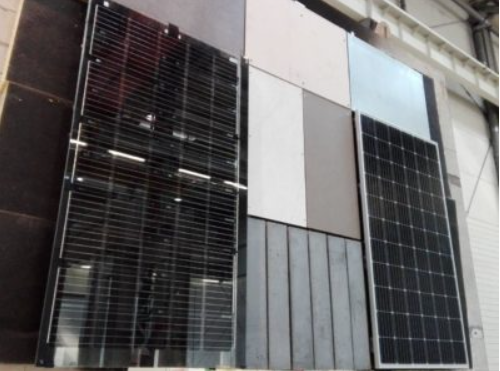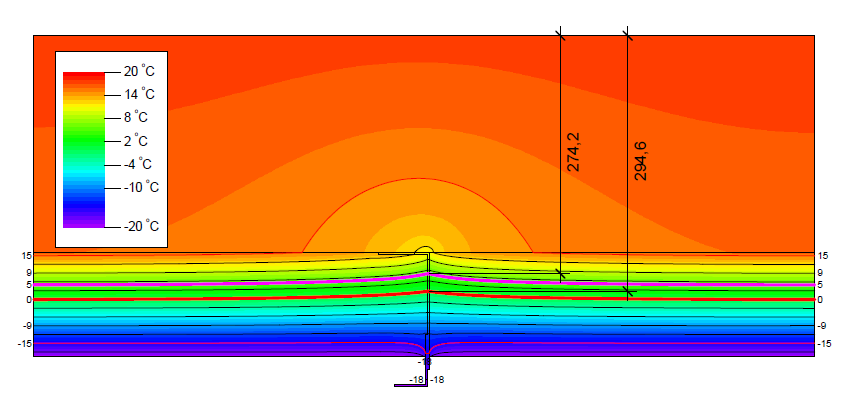Competitive advantage

The innovative and optimised production process allows AGS to offer currently the most competitive prices for passive fastening systems.

Tailor-made production of all facade elements ensures cost optimising for Clients on the level of 20-30%.

Three modern production lines ensure independence from the external contractors.

Competitive prices owing to cooperation with Energy5 and the implementation of common purchasing policy. Owing to higher scale of orders, AGS obtains best prices of raw materials.

Passive solutions made using an innovative metallic coating guarantee protection in even most aggressive environmental conditions to the corrosiveness class C5.
ADVANTAGES OF THE MAGNETIC COATING MAGNELIS®

The only metallic coating, certified for application in the environment C5.

The best and most effective cost alternative for aluminium, stainless steel and hot-dip galvanising.

Conformity to alkali building materials, such as concrete or mortar.

Reduced environmental impact owing to zinc content lowered by 75% and the process of zinc wash-out slower even by 75%.

The coating is 100% recyclable and it does not contain any harmful substances.

The product meets the requirements of LEED and BREEAM certification.

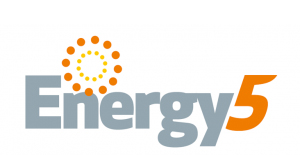
Classification of corrosivity of atmospheres
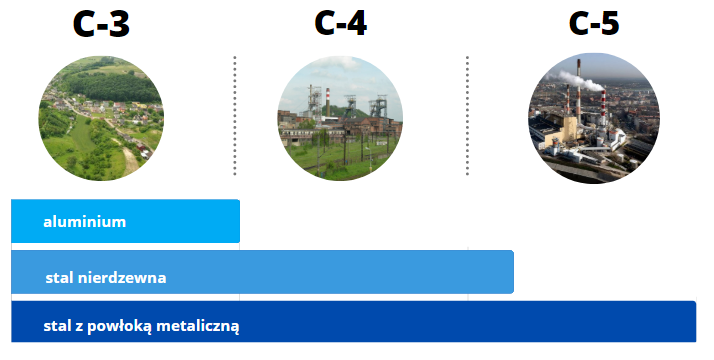
Zone I (category C-5) – industrial atmosphere with particularly strong corrosive impact, including:
- the entire region of the Upper Silesia, from the power plant Łaziska Górne to the power plant Łagisza, the neighbourhood of Częstochowa and Kraków,
- the areas of south-western Poland, covering: the Industrial mining region of Legnica and Głogów (Legnicko-Głogowskie Zagłębie Przemysłowe) and the power plant Turów,
- the areas of large chemical industry plants, i.e. Nitrogen Plants Kędzierzyn, Tarnów, Puławy, Włocławek, Police and Petrochemia Płock,
- the complex of power plants PAK (Pątnów-Adamów-Konin).
Zone II (category C-4) – urban, industrial and seaside zone with medium exposure to corrosion, covering:
- large agglomerations and their nearest surroundings, and in particular Gdańsk, Szczecin, Poznań, Wrocław, Łódź, Warszawa.
Zone III (category C-3 and C-2) – rural area, with medium and weak corrosive impact, covering:
- non-industrial urban and rural areas.
In the Fire Testing Department of the Building Research Institute (ITB) comparative tests were conducted of ventilated facade fastening systems AGS.
The tests confirmed durability during fire and meeting the requirements of §225 of the Technical Conditions of the buildings in the scope of not falling off of facade claddings in the time period as long as 120 minutes.
Thermal insulation
Bracket with zinc coating, from steel GD 350 with a thickness of 2.5 mm | Stainless steel bracket with the thickness of 3 mm | Aluminium, non-passive bracket |
| Depending on the shape and size of the bracket, the heat transfer coefficient (U-factor) is as follows: | Values from the standard: | |
 |  |  |
Arrangement of isotherms – heat transfer coefficient | ||
|  Fig. No. 2 Fig. No. 2 | 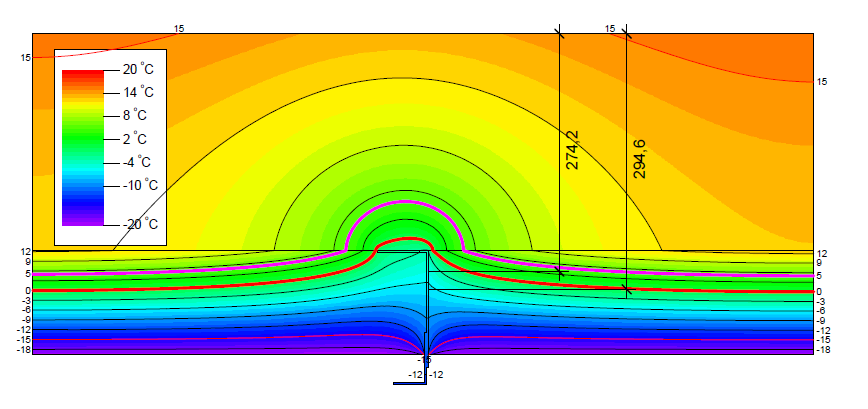 Fig. No. 3 Fig. No. 3 |
Passive brackets AGS HI+ (from steel GD 350 and stainless steel brackets) are innovative building connectors, that substantially limit cold transfer inside the building. They are characterised with:
– very low thermal conductivity coefficient, eliminating point thermal bridges
They allow to obtain heat transfer coefficient for the external walls on the level below U = 0,20 W/m2*K, which conforms to the regulations of the European Union, in force since 2021.
Fig. 1 and Fig. 2 prove that in the case of brackets HI+ made of steel GD350 and from stainless steel without the so called thermal pads, cold transfer inside the wall covered with mineral wool was effectively reduced. Arrangement of isotherms shows that in the place of contact of a bracket with the wall the temperature exceeds 15ºC and the entire wall on its whole thickness does not show any thermal disturbances.
Fig. 3 proves that in case of the bracket made of aluminium also without thermal pads, the isotherm of temperature 0ºC was moved to the inside of the wall. Other isotherms on the wall show substantial heat losses through the transfer of below zero temperatures by aluminium.

